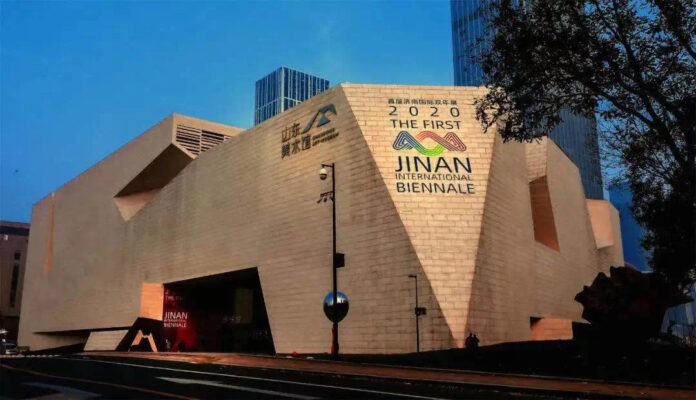Il potere dell’armonia e uno dei concetti fondamentali del confucianesimo. Nato nello Shandong, ancor oggi costituisce la base della cultura tradizionale cinese. Proprio in quella regione dove nacque Confucio, e precisamente a Jinan, cittadina antica e ricca di cultura, lo Shandong Museum ospita circa 600 opere di oltre 300 artisti rappresentativi di 30 nazioni, assieme a un buon numero di autori nazionali. Si tratta della prima edizione della Biennale di Jinan che si svolge all’insegna del “Potere dell’armonia”.
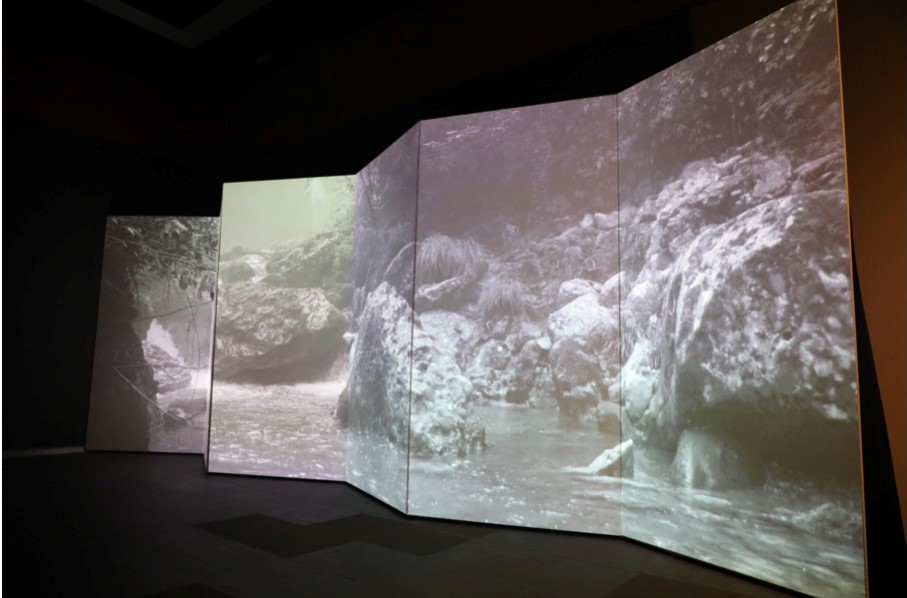
Tra i Paesi coinvolti: Stati Uniti, Germania, Italia, England, Corea del Sud, Giappone, Australia, Argentina e Congo. Dipinti (anche la pittura tradizionale cinese), installazioni, sculture, arte tecnologica: le opere sono dispiegate negli 80 mila metri quadrati dell’edificio.
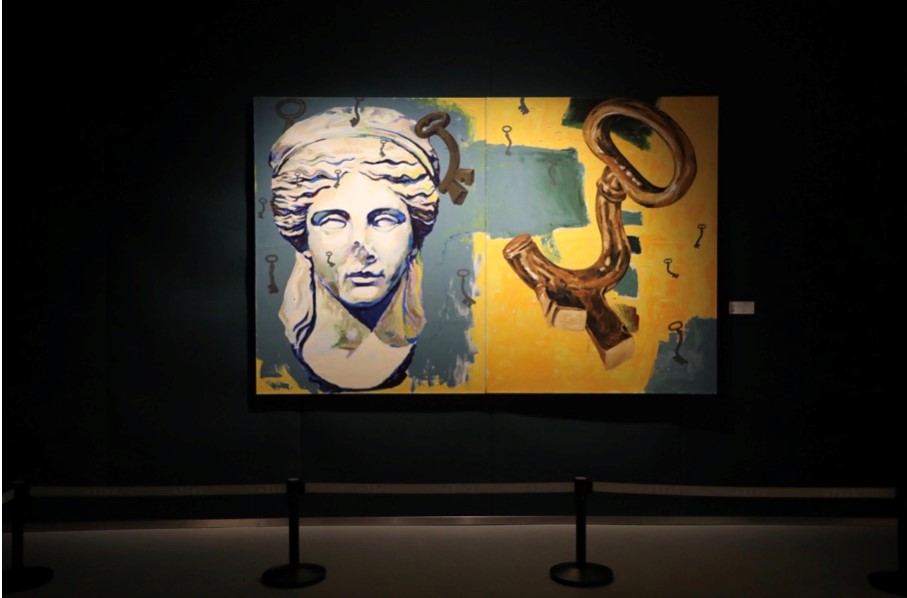
I curatori della Biennale sono Fan Di ‘an, presidente della Chinese Artists Association e presidente della Central Academy of Fine Arts, e Zhang Wang, presidente della Shandong Artists Association e direttore dello Shandong Art Museum. Essi hanno formato un team curatoriale internazionale, composto da Tayfun Belgin, direttore del Museo Hagen Ossos in Germania, da Hans De Wolf della Libera Università di Bruxelles in Belgio e Wonseok Koh, capo curatore della Divisione Esposizioni del Museo d’Arte di Seoul.
Una grande Kermesse ancora aperta per tutto il mese di marzo ma che si è avviata nel dicembre scorso. A dispetto della pandemia, si parla di 5000 mila visitatori, ovviamente sottoposti a ogni misura di sicurezza. Ma non sono mancate le iniziative on line: anche sul piano della visita della Biennale.
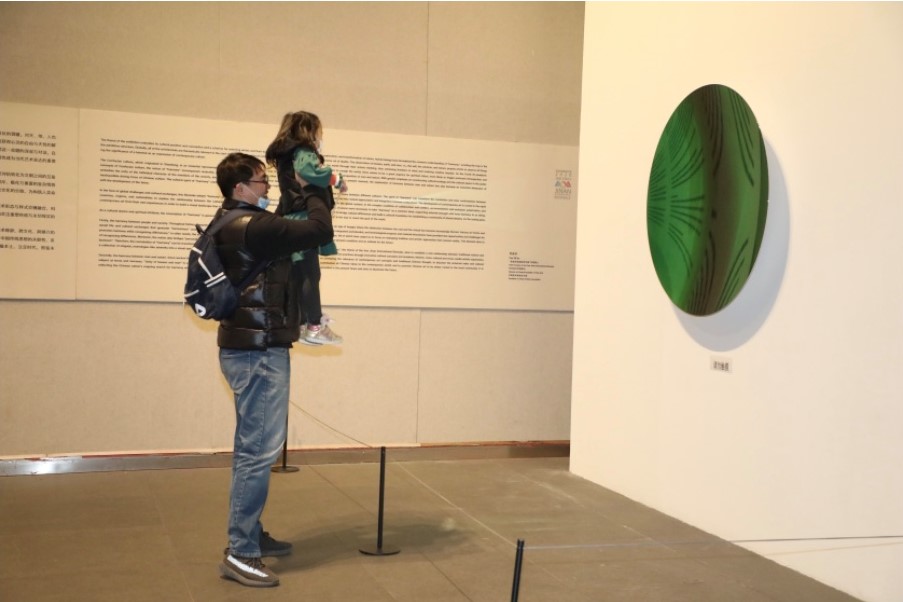
Una rassegna equilibrata. Infatti ha realizzato la complessa idea puntare a promuovere i propri artisti nazionali e, nello stesso tempo, offrire una ampia opportunità di confronto con i loro colleghi stranieri invitati con il contributo di istituzioni e gallerie, come la famosa Lisson Londra.
Focus tematico: l’armonia. Il direttore Zhang Wang ne ha fatto la parola-chiave, dovendosi essa attuare nella vita di relazione interpersonale, fra le culture, le persone e la natura. Quasi non poteva essere diversamente, essendo Shandong la patria di Confucio.
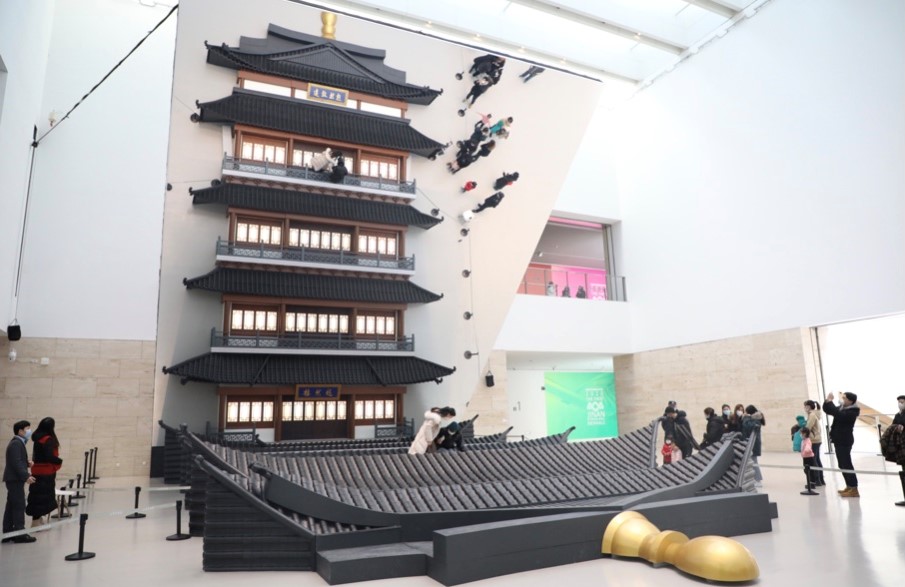
Quindi una Biennale per la bellezza e anche come investimento etico e morale mirato alla pace che, da questo punto di vista, diventa omologo di armonia.
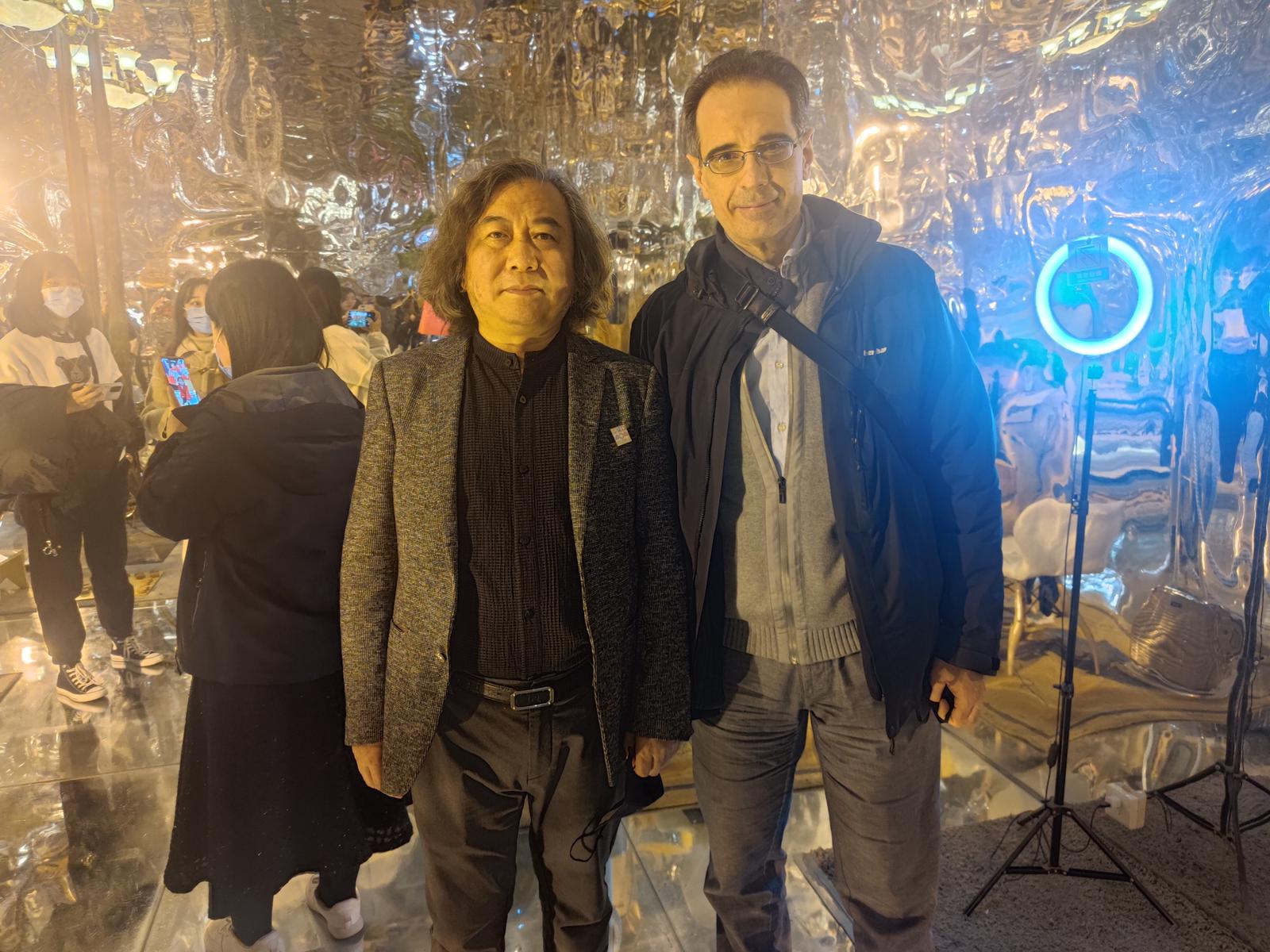
Among the leading official visitors of the Jinan Biennial, Franco Amadei (right), the head of culture at the Italian Embassy in Beijing, He is with Zhan Wang, director of the Shandong Art Museum and president of the Shandong Artists Association
The power of harmony is one of the fundamental concepts of Confucianism, which still today constitutes the basis of traditional Chinese culture. In the Shandong province, where Confucius was born, and precisely in Jinan, an ancient city rich in culture, the Shandong Museum houses about 600 works by over 300 representative artists from 30 nations, together with a good number of national authors. This is the first edition of the Jinan Biennale which takes place under the banner of the “Power of harmony”. Among the countries involved there are the Us, Germany, Italy, England, South Korea, Japan, Australia, Argentina, and Congo. Paintings (including traditional Chinese painting), installations, sculptures, and technological art works are spread over the 80,000 square meters of the building.
The Biennale’s curators are Fan Di ‘an, president of the Chinese Artists Association and president of the Central Academy of Fine Arts, and Zhang Wang, president of the Shandong Artists Association and director of the Shandong Art Museum. They formed an international team of curators, consisting of Tayfun Belgin, director of the Osthaus Museum Hagen in Germany, Hans De Wolf of the Free University of Brussels in Belgium, and Wonseok Koh, chief curator of the Exhibition Division of the Seoul Museum of Art.
This great kermesse, which started last December, will be open for the entire month of March. Despite the pandemic, there are 5,000,000 visitors, obviously subjected to every security measures. Moreover, there were also online initiatives: even in terms of visiting the Biennale.
A balanced exhibition. In fact, the Jinan Biennale has realized the complex goal to promote its own national artists and, at the same time, it offers a wide opportunity for comparison with their foreign colleagues invited with the contribution of institutions and galleries, such as the famous Lisson London.
The thematic focus is harmony. Director Zhang Wang made it the key word, having to be implemented in the life of interpersonal relationship, between cultures, people, and nature. It could not be otherwise, as Shandong is the homeland of Confucius. In short, this Biennale certainly focuses on beauty, but it is also an ethical and moral investment aimed at peace which, from this point of view, becomes a homologue of harmony.

